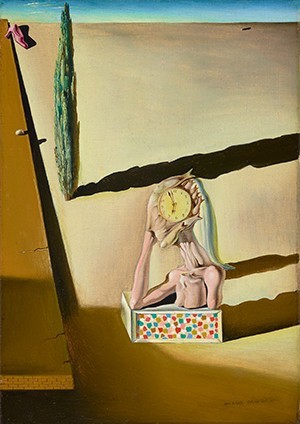Most people familiar with SMU know that the Meadows Museum boasts one of the most comprehensive collections of Spanish art outside of Spain. But what many don’t know is what it takes to bring an exhibition to life.
The museum goes through a similar process in obtaining and displaying art as the country’s largest museums, including the Metropolitan Museum of Art.
From an exhibit’s conception, to when it makes it to the walls, the art must be carefully handled every step of the way. Every detail of the exhibit must be decided – even the paint color on the walls.
“I realize that art handling happens before paintings make it to museums, but I didn’t know forming an exhibit was such an involved process,” said Morgan Fatora, a junior majoring in finance and art history.
Here’s a behind-the-scenes look at how a piece of artwork makes it to the walls of the Meadows Museum:
From Meeting to Museum
Every Tuesday, the Meadows Museum curatorial team meets to discuss acquisitions, loan requests, future exhibitions, and other plans, according to Bridget Marx, associate director of the museum.
If an exhibition is in the works, a curator drafts a “wish list” of works they would like for the show, according to an email from Meadows curator Nicole Atzbach. The curator drafts loan request letters to send to the institutions and collectors who own the works, asking to borrow them. Once its determined whether or not there are enough works able to be loaned, the exhibition can proceed.
Now, the actual paintings come into play.
“All of our paintings are transported in museum quality crates and are accompanied by a courier from the museum that travels with the works wherever they go,” Marx said.
When the art arrives at the institution where it will be installed, the courier sees that the work is safely stored at its new location and is left it its crate to acclimate to the new environment for 24 to 48 hours.
Creating an Exhibition
Now, the registrar completes a comprehensive record of the painting to put in its “object file,” according to Marx. All of the paperwork that comes with the painting goes into that file. Once the painting’s history is collected, it’s time to get the museum ready for the newest exhibition.
The curator and his or her team decide each detail from the paint color on the walls.
“Most works of art come already framed, so that is not something that we can change,” said Atzbach. “With a graphic designer, we decide what type of font we would like to use on our didactic panels.”
The team also decides whether or not to change wall colors, which is dependent on how much time they have to install the show, said Atzbach.
Different paint colors look good depending on what paintings you have, according to Marx. If paintings are more modern, you want whiter walls. Some paintings look better with richer colors on the walls, she said.
According to Marx, it can take up to about a week and a half to install a new exhibition, but the museum will always leave its permanent collection on display for visitors.
On the day of installation, the work of art is removed by art handlers from storage, placed on a special cart to prevent any damage caused by movement, and then placed onto carpeted blocks in the gallery where it will be installed. The courier watches the art handlers safely open the crate and remove the work. He or she inspects the condition of the work, documenting if any changes have occurred, according to Atzbach. If all is okay, the art handlers proceed with the installation of the work.
The curators and director consider a work’s placement carefully, said Atzbach.
“Once the work’s final position within a gallery is decided, the art handlers hang the work of art in the appointed spot,” she said.
The Current Exhibition
All the works in the Meadows Museum are owned by SMU unless part of a temporary exhibition.

One of the current exhibitions at the Meadows Museum is “Salvador Dalí, An Early Surrealist Masterpiece.” Dalí’s famous “L’homme poisson” is on display, though it has “remained out of the public domain for much of its existence,” according to the Meadows Museum website.
The Meadows Museum sometimes likes to hire someone to run an x-ray on the painting. This scan is completely harmless to the work, but provides interesting information.
The x-ray can detect what the painting looks like underneath the top layer. The viewer can see what changes have been made between earlier versions and the final product. This tool was used on Dali’s “L’homme poisson” and allows the viewer to delve deeper into the history of the painting.
“The Meadows Museum is one of the most important cultural resources we have on campus,” said Spanish professor Libby Russ. “I like to bring my students there so they know about it, enjoy it, and even visit it on their own.”
The Dalí exhibition will be on display until June 19. For more information, visit meadowsmuseumdallas.org.










